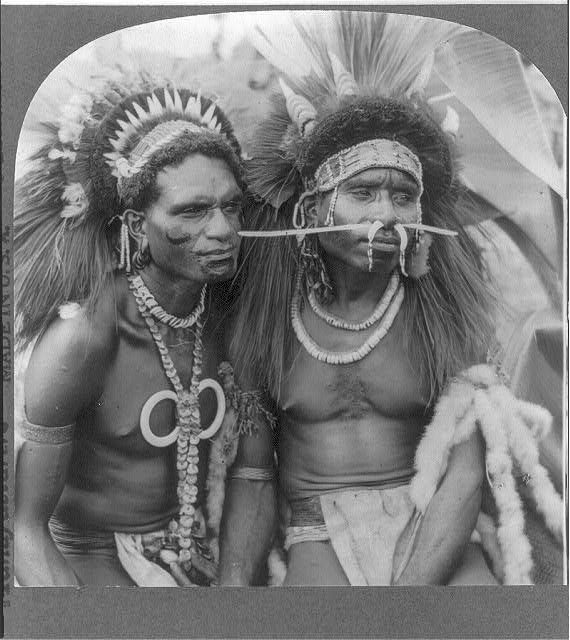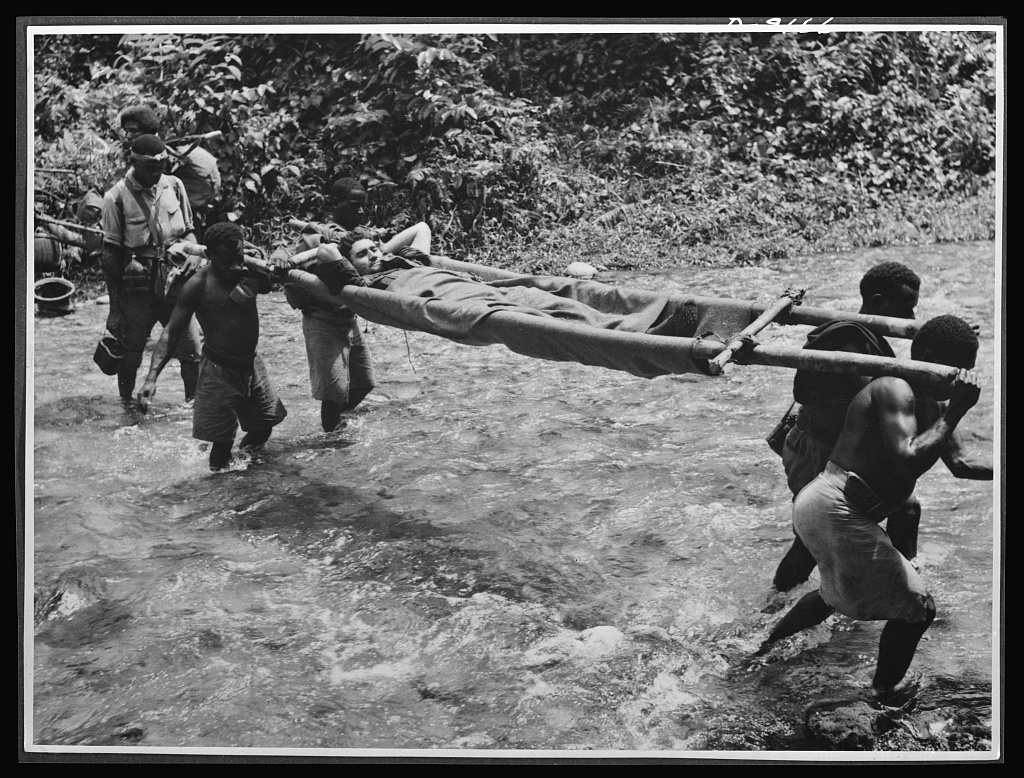It all began in 1526, when Portuguese sailor Jorge de Meneses became the first European visitor to Papua New Guinea and named one of the islands “ilhas dos Papuas” or “land of fuzzy-haired people”.
In 1546, Spanish explorer Inigo Ortiz de Retes named the other main island New Guinea because he thought islanders resembled the people of Guinea in Africa. What the people called themselves mattered not to the new arrivals. The name stuck. In July 1971 the land was renamed Papua New Guinea. But this Flashbak is about the 1940s and World War 2, when those wire-haired “savage man-eaters” showed their humanity and decency amid the civilising forces’ mayhem, murder and carnage.
The bloody New Guinea campaign began in January 1942, when the Empire of Japan invaded the Australian-administered territories of the New Guinea Mandate (23 January) and Papua (8 March), and overran western New Guinea (beginning 29/30 March), which was a part of the Netherlands East Indies. During the second phase, lasting from late 1942 until the Japanese surrender, the Allies cleared the Japanese first from Papua, then the Mandate and finally from the Dutch colony.
The United States. Office of War Information took photographs of the movements and fighting, including these pictures of the natives risking life and limb to aid the Allied troops. The captions to these photos are the original words.
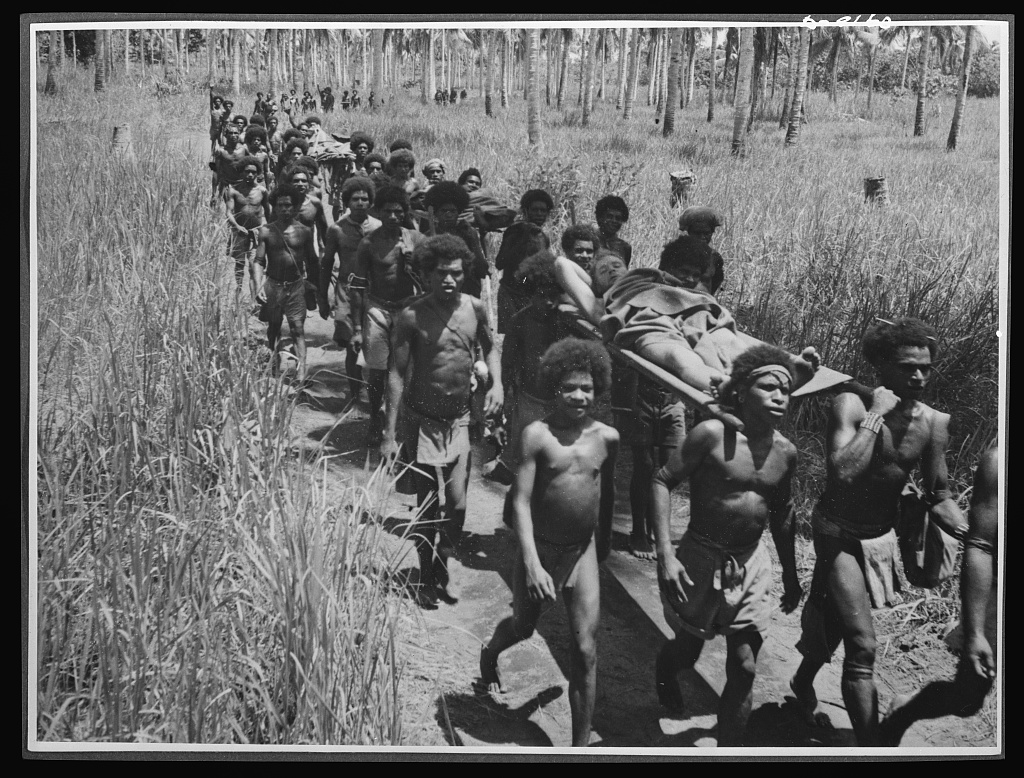
Natives aid Allied drive in New Guinea jungles. Without the aid of the New Guinea natives, many a wounded Allied soldier might have died in the trackless jungles. Native carriers “Fuzzy Wuzzy Angels” are shown bringing wounded troops into an advanced American dressing station in the Buna area. Marsh 1943.

Buna, New Guinea. Papuan natives shouldering litters carrying blood plasma to the evacuation stations just behind the front liine at Buna. They are given a large measure of credit for the Allied successes in New Guinea. The litters are made of betelwood, by hand, and bound with bark rope

Buna (vicinity), New Guinea. Native stretcher bearers in New Guinea carrying American wounded from the front lines pause to rest themselves and the soldiers in the shade of a coconut grove, enroute to hospitals in the rear. 1942
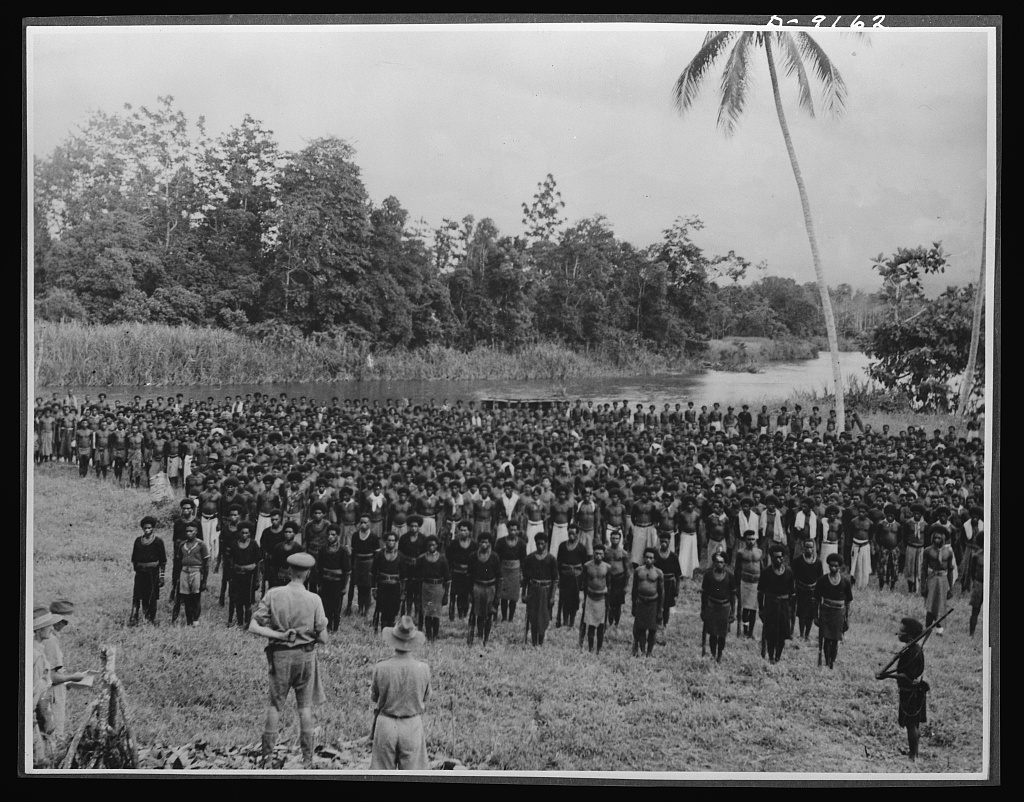
Natives aid Allied drive in New Guinea jungles. The Australian Commonwealth has decorated hundreds of New Guinea natives for their invaluable services to the Allied cause. General Vassey is shown at a ceremony at which medals were presented to a large group of stretcher and supply carriers. Mach 1943
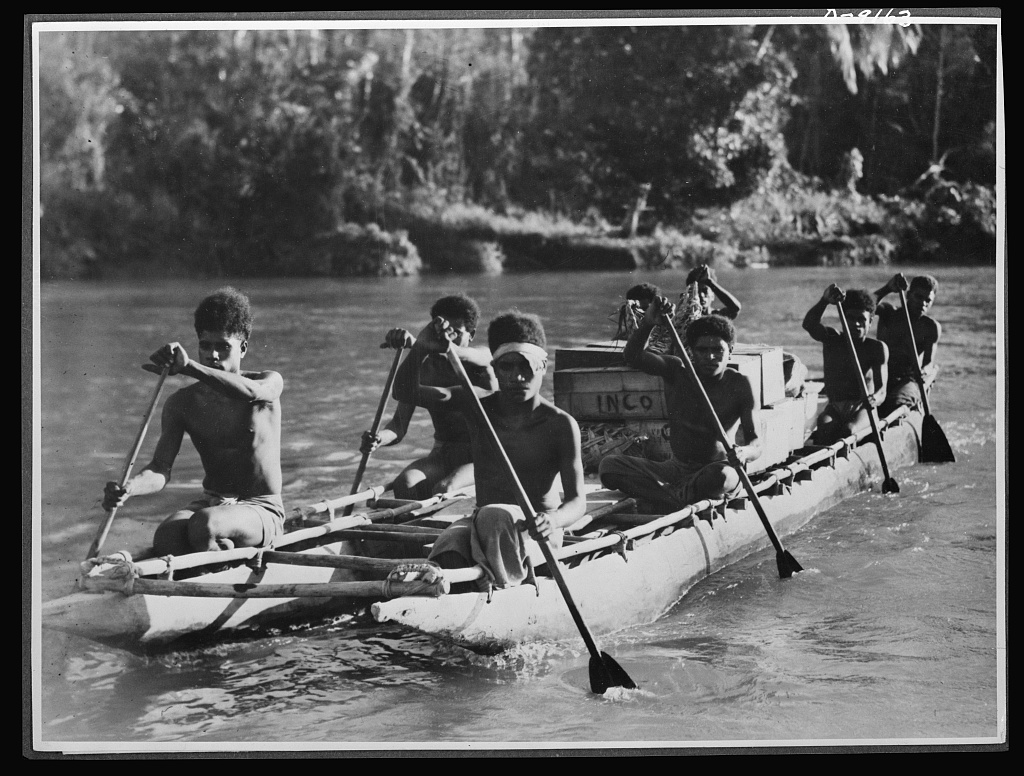
Natives aid Allied drive in New Guinea jungles. Dense jungles, deep ravines and high mountain ranges make transport extremely difficult for the Allied troops in the New Guniea area. Outrigger supply services, manned by natives, are of invaluable aid in waging tropic warfare. March 1943
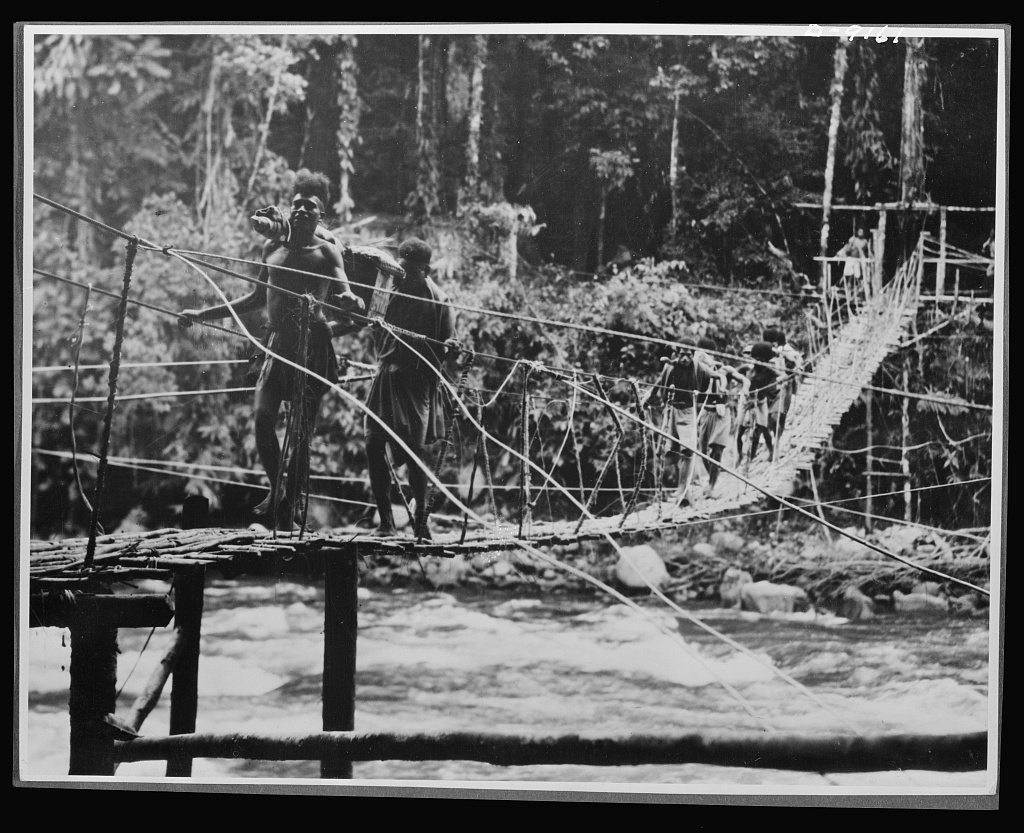
Natives aid Allied drive in New Guinea jungles. Permanent bridges are rare, even in the most settled parts of the island, because of fast rising streams. When bridges are washed out, however, the natives quickly build another so that supplies and wounded Allied troops may be transported to and from the fronts

Natives aid Allied drive in New Guinea jungles. Long distances must be traversed by the supply lines of the Allied troops in the New Guniea area. Native carriers, shown above, keep going all day long through the trackless undergrowth in carrying supplies and evacuating the wounded
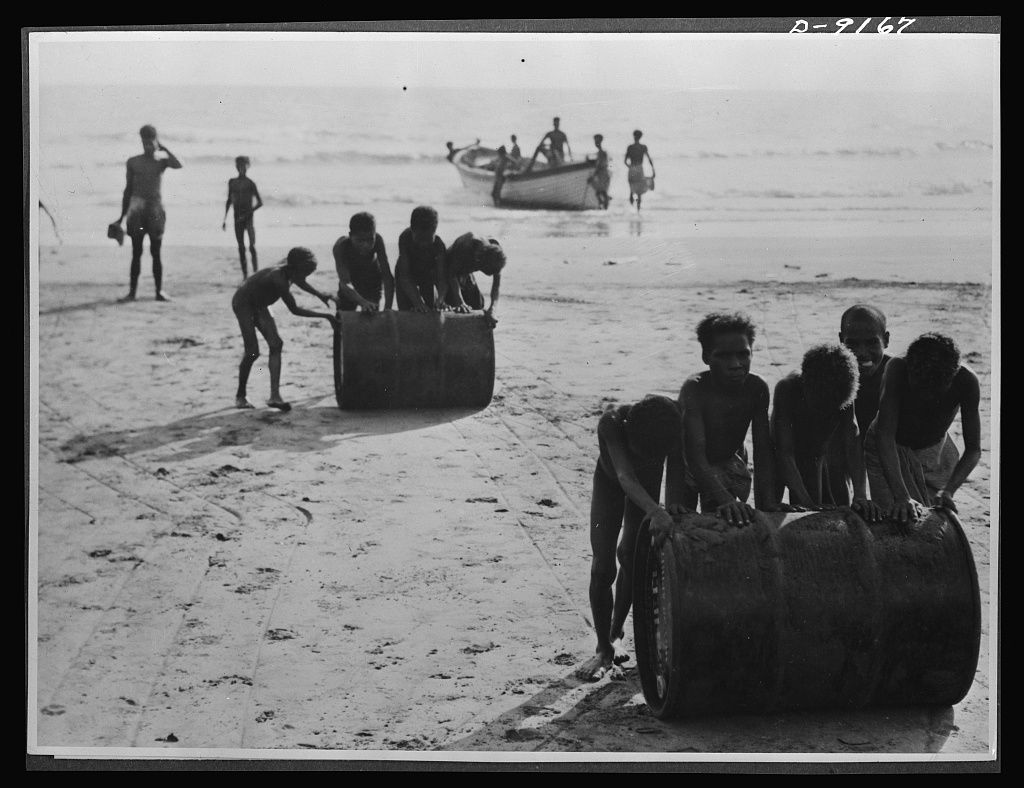
Natives aid Allied drive in New Guinea jungles. Even the native youngsters assist the Allied troops in the New Guinea offensive. Boys are shown helping to unload petrol at a beach in this area

Natives aid Allied drive in New Guinea jungles. A short rest period in the New Guinea campaign. Natives and Allied troops pause at a YMCA (Young Men’s Christian Association) unit in a forward area. These natives give invaluable aid to the Allied forces in transporting supplies and wounded soldiers through trackless jungles

Natives aid Allied drive in New Guinea jungles. Natives who played a great part in the Allied success in New Guinea are addressed by General Vasey. Native police form a guard of honor as native carriers are presented with medals

Natives aid Allied drive in New Guinea jungles. Corporal R.D. Somerville being taken from a dressing station in New Guinea just after the fighting at Oive. Without the native carrier service, Allied casualties would have been greater in this area
Would you like to support Flashbak?
Please consider making a donation to our site. We don't want to rely on ads to bring you the best of visual culture. You can also support us by signing up to our Mailing List. And you can also follow us on Facebook, Instagram and Twitter. For great art and culture delivered to your door, visit our shop.
